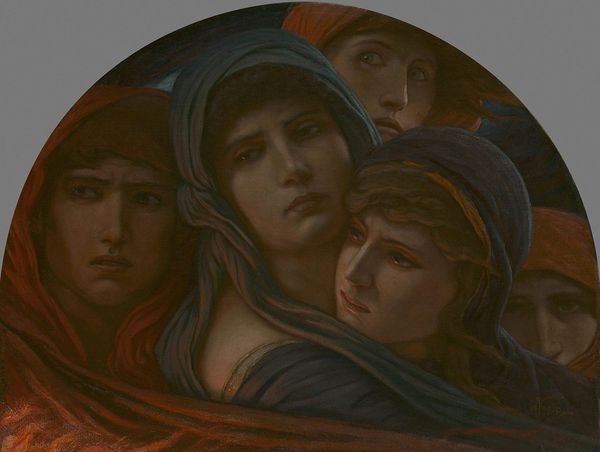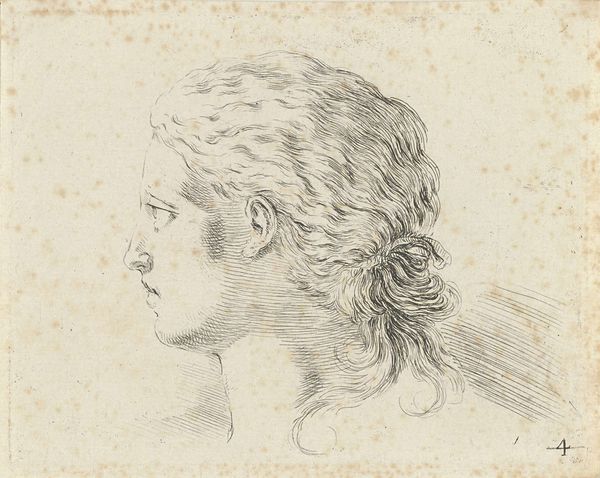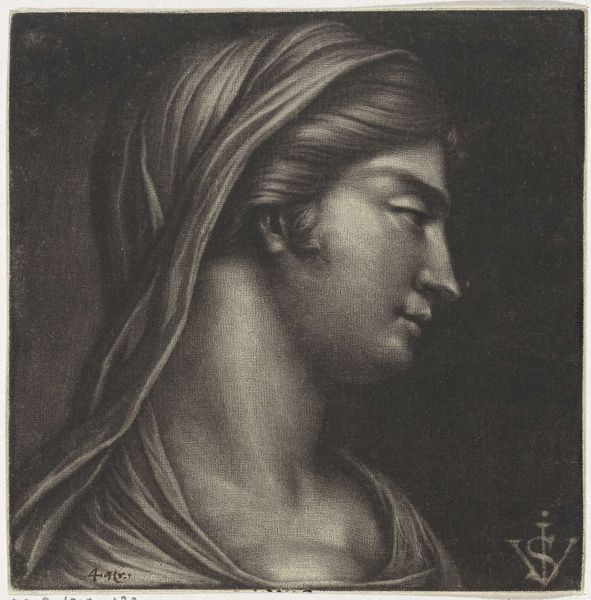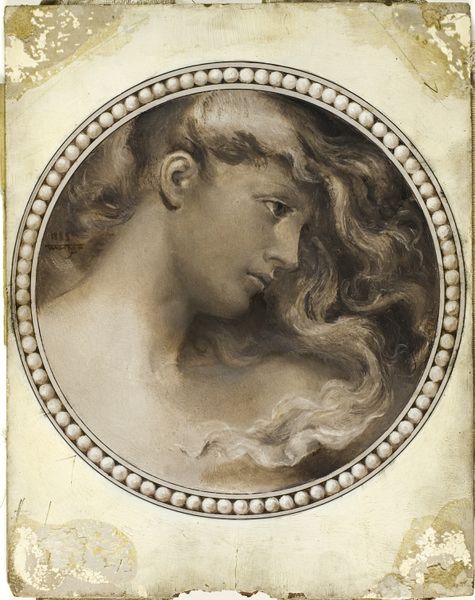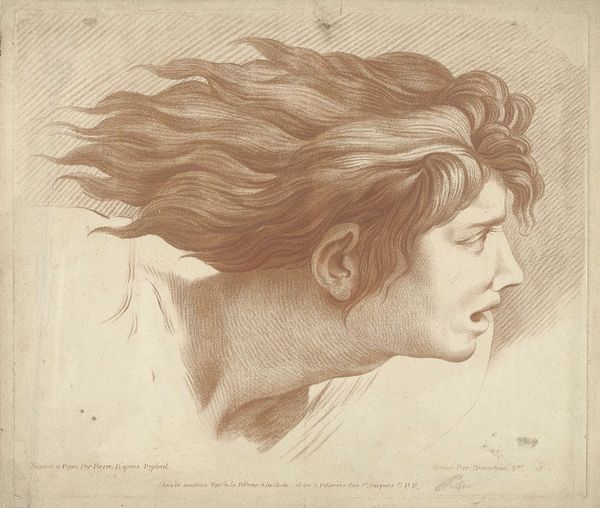
#
portrait reference
#
portrait head and shoulder
#
animal portrait
#
mythology
#
animal drawing portrait
#
portrait drawing
#
facial study
#
facial portrait
#
portrait art
#
fine art portrait
#
digital portrait
Copyright: Public Domain: Artvee
Curator: Elihu Vedder's "Head of Medusa," painted in 1878, strikes me as intensely melancholic. What are your first thoughts? Editor: A portrait of rage, subtly muted. I'm drawn to the material elements. Note the texture of the oil on canvas. It gives a soft luminosity, at odds with the fearsome subject. Curator: Vedder clearly intended this ambiguity. The execution of such a subject by a male artist is relevant—Medusa, so often portrayed as a monster, but here she's rendered with a delicate sadness. The question is: what production circumstances prompted such treatment? Editor: Precisely. It resonates with late 19th-century narratives of the fallen woman. Think about the mythos and about patriarchal violence and how those manifest materially in the object we see here. There's a social critique bubbling under the surface. Curator: Absolutely, Vedder had become fascinated by ancient and Renaissance literature, his travels in Italy surely contributing to his awareness of such themes, which brings in how labor is rendered and aestheticized within that period’s artistic climate. Editor: And who gets to consume this particular depiction? What meanings were audiences projecting onto Medusa, considering gender and power dynamics of the time? Her story's continual reframing reveals society's evolving anxieties surrounding female agency. Curator: Vedder wasn't just aiming for superficial aesthetics. The very labor invested in creating it signifies an interest beyond simple artistic exercises. There is that complex relationship between male gaze and mythical subject we must consider. Editor: A very valid consideration—Vedder captures a vulnerability and that perhaps hints at a more empathetic, though still very mediated, understanding of Medusa's story and the female experience. Curator: This piece exemplifies how artists grappled with narratives in a climate grappling with social issues and personal expression, making us reflect upon where our sympathies truly reside. Editor: And prompts us to think about how, through his choice of materials and meticulous technique, Vedder opens up pathways for questioning prevalent assumptions about monsters and victims.
Comments
No comments
Be the first to comment and join the conversation on the ultimate creative platform.

